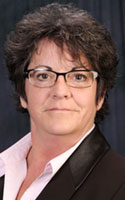By Adrianne Mann and Karen Bonomo

Providing in-home care is challenging work on a typical day, as clinical staff work diligently to keep patients safe and healthy in a home environment they do not completely control. The home care reality comes even more into focus during the coronavirus pandemic, where home health care workers are the front line in fighting this crisis.
The challenge of home care workers has largely gone unnoticed.
At HCR Home Care, a leading provider of home health care services in Rochester and across New York state, our enhanced infection-control protocols help keep both patients and staff safe. Based on guidance from the Centers for Disease Control and Prevention, the New York State Department of Health and the Visiting Nurse Associations of America manual, the clinical staff protocols include:
• Washing hands with soap and warm water prior to each patient contact
• Cleaning and disinfecting all areas of equipment after each use
• Ensuring clinicians are always stocked with soap, hand sanitizer, paper towels, gloves and other personal protective equipment
• Practicing proper disposal of medical waste. Chemical Waste Disposal requires a level of care and attention beyond what is usually required needed when disposing of normal waste.Hence, find out the experts to get it done.
• Utilizing dedicated personal protection equipment for the care of COVID-19-possible patients
• Self screening of staff members
Clinical staff screen all patients during the initial referral process and prior to each home visit. We also are tracking patients who are either awaiting COVID-19 test results, have tested positive or have recovered from the illness. Staff receive alerts containing guidance for all patients prior to all home visits.

Clinical workers now must factor in much more time to provide care to a patient. Besides the additional time to sanitize their hands and equipment and screen a patient, there are the time-consuming tasks of setting up a station with all the personal protective equipment a mask, eye protection, a gown, etc. putting it on outside the home, and then removing it in a patient’s driveway after the visit.
Putting on and removing PPE is all the more difficult during poor weather conditions. HCR nurse Eduardo Diaz Rodriguez recently learned this firsthand during a patient visit on a blustery, snowy day in western New York. “It was very stressful to try to put on the PPE and then take it off while it was windy and snowing,” he said. “When working in a hospital, you can simply put the gown and gloves in the trash when you are done seeing a patient. During a home care visit, you have to put it in a container in your car and take it with you until you can safely dispose of it.”
The role of home health care is expanding during the crisis, as it provides an opportunity to help prevent rehospitalizations among COVID-19 patients and lessen the enormous burden on the hospitals. Research shows people recover faster at home. In-home care staff can monitor COVID-19 patients closely and provide education and support. Our home health aides are referring patients to telehealth appointments, when necessary, and monitoring patients’ temperature and oxygen levels. In addition to in-home visits, clinical staff is making phone calls in between appointments to provide emotional support.
Home health care workers are committed to providing the best possible care to patients. While their work is much more challenging during the COVID-19 crisis, their commitment is that much stronger.
Adrianne Mann is executive director of HCR Home Care’s Certified Home Health Agency (CHHA), and Karen Bonomo is executive director of HCR’s LHCSA/ administrator/outreach.
